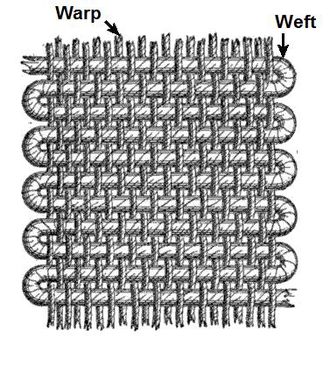Textiles: Navajo Textiles
+Add category to My Preferences
Navajo textiles rank among the most widely collected and celebrated Native American art forms. Their strong geometric patterns are instantly recognizable, even to those with little knowledge of Southwestern art. Originally, weavers made textiles to use as clothing and saddle blankets. With the emergence of a market in the late nineteenth century, weavers directed their efforts toward making rugs for sale. Today, the tradition remains strong, and textiles play a major role in the Navajo Nation's economy.
The majority of the textiles we offer date to before World War II. They were woven on vertical looms, often using handspun, hand-dyed yarns, and occasionally using commercial yarns of the period. Our collection often includes floor rugs, blankets made to be worn, and small pieces that are suitable as wall hangings.

Warp and Weft: "All twill weaves are produced by floating the weft elements over more than one warp at a time to create a raised pattern of color and texture. Three twill-weave techniques were used by both Navajo and Pueblo weavers: plain twill forming diagonal floats; herringbone twill, in which the diagonal floats alternate direction to form a vertical zigzag or chevron pattern; and a diamond twill, in which the herringbone patterns are woven in such a manner as to create concentric diamond patterns." Reference: Kaufman, Alice and Christopher Selser. The Navajo Weaving Tradition 1650 to the Present: page 138.
Navajo Weaving Tradition from ATADA.org on Vimeo.
View Other Categories Here:


 Navajo Textiles
Navajo Textiles